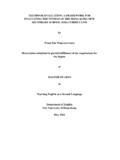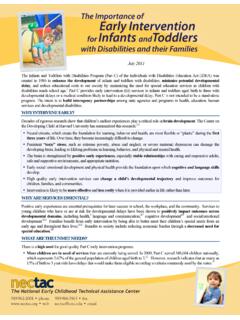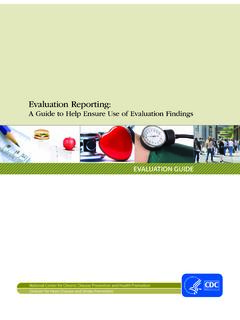Transcription of Gender-Based Violence Research, Monitoring, and …
1 Gender-Based Violence research , Monitoring, and evaluation with Refugee and Conflict-Affected PopulationsA Manual and Toolkit for Researchers and PractitionersACKNOWLEDGMENTSThis document was developed with funding from the US Department of State Bureau of Population, Refugees and Migration. Additional support was received from the What Works to Prevent Violence Against Women and Girls in Conflict and Humanitarian Crises research program, which is funded by the UK Department for International Development (DFID).The views expressed and information contained in this document are the product of the Global Women s Institute and are not necessarily those of or endorsed by the US Department of State or DFID, neither of which can accept no responsibility for such views or information or for any reliance placed on themField Testing Version - September 2017 Gender-Based Violence research , Monitoring, and evaluation with Refugee and Conflict-Affected PopulationsA Manual and Toolkit for Researchers and PractitionersTABLE OF CONTENTSS ection I: Key Concepts.
2 11. Introduction .. to Gender-Based Violence among Refugee and Conflict-Affected to research , Monitoring and evaluation for GBV programs among Refugee and Conflict-affected Populations .. Gender and Participatory Approaches ..95. Safety and Ethical Considerations for research , Monitoring and evaluation with Refugees and Conflict-Affected Populations ..116. Determining the Overall Aims of the Project ..16 Section II: Technical Approaches ..237. Program Monitoring and evaluation for GBV Programs with Refugee and Conflict-Affected Populations ..238. Impact evaluation for GBV Programs with Refugee and Conflict-affected Populations ..319. research and Approaches to Data Collection ..4210. Determine your Data Collection Methods ..5111. Tool Design, Site Selection and Sampling Strategies ..59 Section III: Operational Planning and Implementation ..6812. Data IV: Analysis, Uptake and Dissemination.
3 7513. Analyze and understand the data ..7514. Using the results ..821 SECTIONKey Concepts 1. IntroductionWHAT IS THE MANUAL?This manual and the associated practitioner toolkit form a comprehensive package to support researchers and members of the humanitarian community in conducting ethical and technically sound research , monitoring and/or evaluation (RME) on Gender-Based Violence (GBV) within refugee and conflict-affected populations. The manual s step-by-step approach enables readers to make appropriate ethical and methodological decisions when collecting data with refugee and other vulnerable populations. In addition, the practitioner s toolkit provides data collection tools, templates and other resources that can be used in the field to enhance data collection and analysis efforts. Created by the Global Women s Institute (GWI) at the George Washington University, these materials have been developed through a multi-phased process designed to identify and consolidate best practices and lessons learned in the field.
4 Researchers at GWI first conducted a literature review of peer-reviewed articles and grey literature on GBV in refugee and conflict-affected populations. The team consulted with research and GBV specialists to identify the most important considerations for conducting ethical and methodologically-sound data collection among these populations. Through this process, the team also collected case studies to demonstrate the practical applications of best practices in real world settings. The combination of these lessons and GWI s own experience in GBV research , monitoring and evaluation form the basis of this document. WHY IS IT NEEDED?There is an increasing emphasis on research , monitoring and evaluation for GBV programs among refugee and conflict-affected populations. However, these efforts are mixed in quality and often raise ethical questions. Researchers and practitioners often use weak methodologies ( non-population based sampling, insufficient sample sizes, utilizing poor questionnaire design, insufficient training/piloting for data collectors, etc.)
5 That reduce the utility of their results. In addition, not all researchers appropriately consider the unique ethical considerations that are relevant to collecting data on GBV in these particularly vulnerable and resource-poor populations. Key Concepts | 2 Despite this, donors are now emphasizing the importance of NGO accountability to affected populations as well as demanding that NGOs demonstrate the effectiveness of the funds they provide. This has increased the pressure on the humanitarian community to move to a more evidence-based approach and to better understand and measure the effect of their programs to prevent and respond to GBV. While there are other existing guidelines and manuals that can help researchers and practitioners to collect data on GBV, none comprehensively examine the full research , monitoring and evaluation spectrum or focus specifically on the unique needs of refugee populations.
6 This manual and toolkit aim to be practical and accessible to both researchers and GBV program staff alike. It provides an overall introduction to key concepts and considerations for GBV research , monitoring and evaluation as well as focuses on what makes this work different when undertaken with refugee and conflict-affected Inter-Agency Standing Committee. 2015. Guidelines for Integrating Gender-Based Violence Interventions in Humanitarian Action: Reducing risk, promoting resilience and aiding IS IT FOR?This manual and toolkit have been written for a variety of audiences. Most importantly these resources aim to bridge the gap between the academic and international humanitarian communities by focusing on these two groups. First, for the international humanitarian community, the guidance will service as a primer on how to conduct safe and ethical research , monitoring and evaluation on GBV in refugee and conflict-affected settings.
7 It provides a basic overview of methodological choices and best practices on data collection for GBV allowing GBV specialists to design and conduct their own basic research , monitoring and evaluation as well as to feel empowered to engage with the academic community to undertake more complex research and evaluation designs. For the academic community, this guide will provide an introduction to the key principles that make GBV research , monitoring and evaluation different particularly among refugee and conflict-affected populations. It will share best practices and lessons learned that will help them make the most methodologically and ethically appropriate decisions for their own research , monitoring and/or evaluation efforts. 2. Introduction to Gender-Based Violence among Refugee and Conflict-Affected PopulationsWHAT IS Gender-Based Violence ? Gender-Based Violence (GBV) is an umbrella term commonly used to refer to Violence between individuals that stems from power differentials between the perpetrator and the survivor.
8 According to the United Nations 2015 Inter-Agency Standing Committee Guidelines for Integrating Gender-Based Violence Interventions in Humanitarian Action, the term refers to: "any harmful act that is perpetrated against a person's will and that is based on socially ascribed ( gender) differences between males and females. The term Gender-Based Violence is primarily used to underscore the fact that structural, gender- based power differentials between males and females around the world place females at risk for multiple forms of Violence . As agreed in the Declaration on the Elimination of Violence against Women (1993), this includes acts that inflict physical, mental or sexual harm or suffering, threats of such acts, coercion, and other deprivations of liberty, whether occurring public or private life. 1 Key Concepts | 3 Some organizations prefer to give greater emphasis to sexual Violence and refer to use the term Sexual and Gender-Based Violence or SGBV.
9 Within the broad definition of GBV, there are specific forms of Violence that some organizations choose to highlight. The most commonly referenced term is Violence against Women and Girls or VAWG. The Declaration on the Elimination of Violence Against Women, adopted by the United Nations General Assembly in 1993, defines Violence against women as: any act of gender based Violence that results in, or is likely to result in, physical, sexual, or psychological harm or suffering to women, including threats of such acts, coercion or arbitrary deprivation of liberty, whether occurring in public or private life .2 It encompasses, but is not limited to, physical, sexual and psychological Violence occurring in the family, including battering, sexual abuse of female children in the household, dowry related Violence , marital rape, female genital mutilation and other traditional practices harmful to women, non-spousal Violence and Violence related to exploitation; physical, sexual and psychological Violence occurring within the general community, including rape, sexual abuse, sexual harassment and intimidation at work, in educational institutions and elsewhere; trafficking in women and forced prostitution.
10 And physical, sexual and psychological Violence perpetrated or condoned by the state, wherever it GBV can also refer to other forms of Violence beyond VAWG particularly some forms of Violence perpetrated against men and boys and Gender-Based Violence against members of marginalized groups in the community. The 2015 IASC guidelines set forth the following definitions: Violence against men and boys: The term Gender-Based Violence is also increasingly used by some actors to highlight the gendered dimensions of certain forms of Violence against men and boys particularly some forms of sexual Violence committed with the explicit purpose of reinforcing gender inequitable norms of masculinity and femininity ( sexual Violence committed in armed conflict aimed at emasculating or feminizing the enemy). 2 WHO, 1997: WHO, 1997: Guidelines for Integrating Gender-Based Violence Interventions in Humanitarian Action, 5-6 This Violence against males is based on socially constructed ideas of what it means to be a man and exercise male power.






